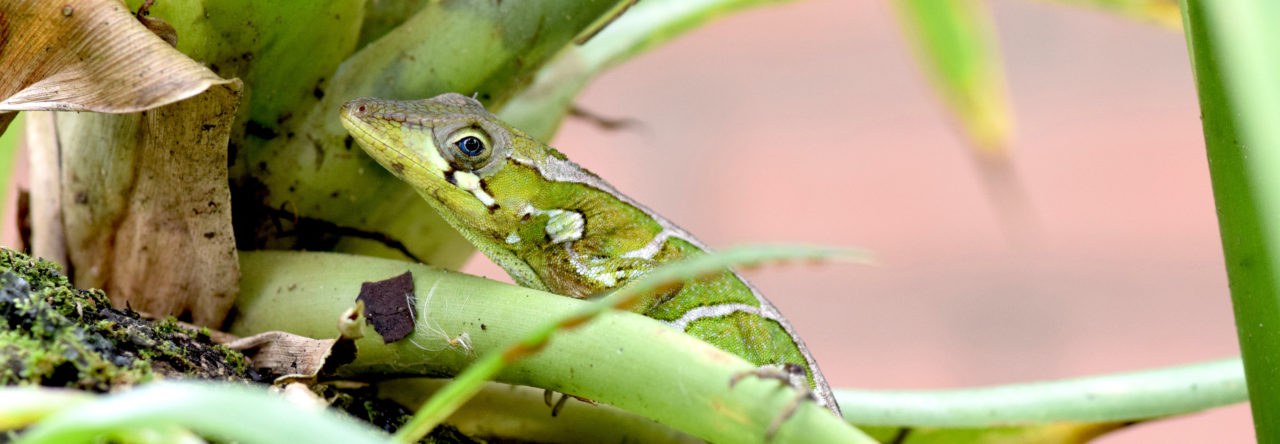 Although devoted to all things Anolis, Anole Annals strives to keep its readers updated on relevant findings concerning other lizards. In that vein, we’ve just learned of a newly completed thesis on lacertid lizards on European islands by Anna Runemark at Lunds University, under the supervision of Erik Svensson. Here’s the English summary of her thesis, from this page, and some remarks from Erik here. Her defense is on May 25th. Good luck, Anna!
Although devoted to all things Anolis, Anole Annals strives to keep its readers updated on relevant findings concerning other lizards. In that vein, we’ve just learned of a newly completed thesis on lacertid lizards on European islands by Anna Runemark at Lunds University, under the supervision of Erik Svensson. Here’s the English summary of her thesis, from this page, and some remarks from Erik here. Her defense is on May 25th. Good luck, Anna!
“Islands are cradles for new biodiversity and provide natural laboratories for the study of population divergence. In my thesis, I investigated the role of different evolutionary processes in the population divergence in the Skyros wall lizard (Podarcis gaigeae), a species where islet populations have strongly diverged morphologies. I used replicate islet populations and their respective most proximate mainland populations to investigate how divergence has proceeded following the isolation of the islets. First, I combined bathymetric maps with sea level curves and molecular inferences based on Bayesian statistics to investigate the biogeographical history of populations. I found that islet populations have become isolated by vicariance following sea level rises during the last thousands of years, and no significant gene flow between populations. To investigate which processes are affecting population divergence, I studied patterns of divergence in coding genetic variation, traits assumed to be under simple Mendelian inheritance, morphological and behavioral traits. A clear pattern of parallel adaptive divergence in the islet environment emerged for traits mainly subjected to natural selection. Islet lizards were larger, greener and less prone to escape. Islet lizards were also less cryptic in their environments than were mainland lizards. Moreover, between-population variation in size and color was larger for islet- than for mainland populations. These patterns are indicative of a predation release. I also found that islet lizards have relatively wider and differently shaped heads as well as a stronger bite force in relation to mainland populations. Data on available food and realized diet suggest that these changes are adaptations to harder island diet. Together these data suggest that predation release and selection for a diet change have interacted and jointly driven the evolution of larger body sizes on islands.
No general pattern of parallel divergence was found for traits subjected primarily to sexual selection. Instead, divergence in throat color morph frequency and sex pheromone composition were significantly correlated with neutral genetic divergence. This indicates that stochastic processes such as genetic drift have contributed to divergence of these traits. I also investigated if mate preferences for pheromones, throat color and body size could be driving population divergence. I found no population differences in preferences for throat color and body size, suggesting that mate choice does not drive divergence in these characters. Islet populations did, however, prefer scent from islet lizards, whereas mainland lizards were less discriminatory. This implies that there could be some mate discrimination against mainland lizards that disperse to islets.
Read More







 Although devoted to all things Anolis, Anole Annals strives to keep its readers updated on relevant findings concerning other lizards. In that vein, we’ve just learned of a newly completed thesis on lacertid lizards on European islands by Anna Runemark at Lunds University, under the supervision of Erik Svensson. Here’s the English summary of her thesis, from
Although devoted to all things Anolis, Anole Annals strives to keep its readers updated on relevant findings concerning other lizards. In that vein, we’ve just learned of a newly completed thesis on lacertid lizards on European islands by Anna Runemark at Lunds University, under the supervision of Erik Svensson. Here’s the English summary of her thesis, from 


